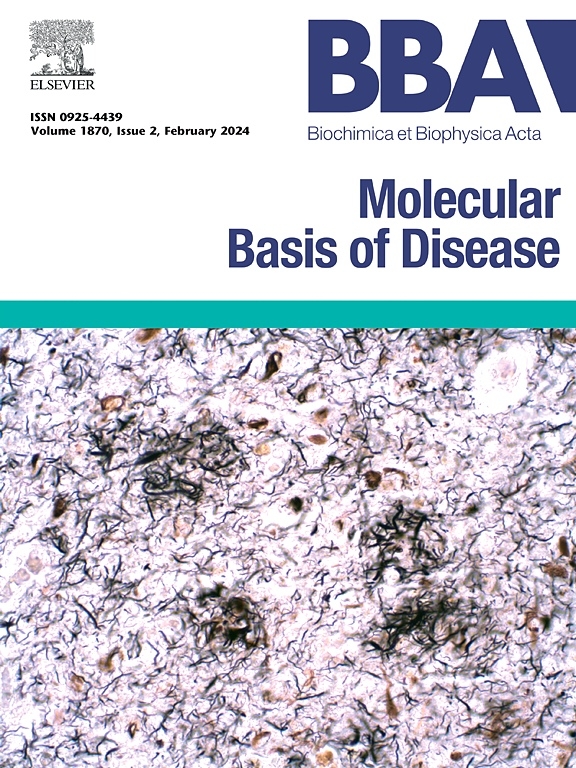Feature genes of hepatitis B virus-positive hepatocellular carcinoma, established by its molecular discrimination approach using prediction analysis of microarray
IF 4.2
2区 生物学
Q2 BIOCHEMISTRY & MOLECULAR BIOLOGY
Biochimica et biophysica acta. Molecular basis of disease
Pub Date : 2004-12-24
DOI:10.1016/j.bbadis.2004.07.004
引用次数: 0
Abstract
Recent introduction of a learning algorithm for cDNA microarray analysis has permitted to select feature set to accurately distinguish human cancers according to their pathological judgments. Here, we demonstrate that hepatitis B virus-positive hepatocellular carcinoma (HCC) could successfully be identified from non-tumor liver tissues by supervised learning analysis of gene expression profiling. Through learning and cross-validating HCC sample set, we could identify an optimized set of 44 genes to discriminate the status of HCC from non-tumor liver tissues. In an analysis of other blind-tested HCC sample sets, this feature set was found to be statistically significant, indicating the reproducibility of our molecular discrimination approach with the defined genes. One prominent finding was an asymmetrical distribution pattern of expression profiling in HCC, in which the number of down-regulated genes was greater than that of up-regulated genes. In conclusion, the present findings indicate that application of learning algorithm to HCC may establish a reliable feature set of genes to be useful for therapeutic target of HCC, and that the asymmetric expression pattern may emphasize the importance of suppressed genes in HCC.
乙型肝炎病毒阳性肝癌的特征基因,通过微阵列预测分析的分子鉴别方法建立。
最近引入的一种用于cDNA微阵列分析的学习算法允许根据其病理判断选择特征集来准确区分人类癌症。在这里,我们证明乙型肝炎病毒阳性的肝细胞癌(HCC)可以通过基因表达谱的监督学习分析成功地从非肿瘤肝组织中识别出来。通过对HCC样本集的学习和交叉验证,我们可以鉴定出一组优化的44个基因,用于区分HCC与非肿瘤肝组织的状态。在对其他盲测HCC样本集的分析中,发现该特征集具有统计学意义,表明我们的分子鉴别方法具有定义基因的可重复性。一个突出的发现是HCC中表达谱的不对称分布模式,其中下调基因的数量大于上调基因的数量。综上所述,本研究结果表明,将学习算法应用于HCC可以建立一个可靠的基因特征集,用于HCC的治疗靶点,并且不对称的表达模式可能强调了HCC中抑制基因的重要性。
本文章由计算机程序翻译,如有差异,请以英文原文为准。
求助全文
约1分钟内获得全文
求助全文
来源期刊
CiteScore
12.30
自引率
0.00%
发文量
218
审稿时长
32 days
期刊介绍:
BBA Molecular Basis of Disease addresses the biochemistry and molecular genetics of disease processes and models of human disease. This journal covers aspects of aging, cancer, metabolic-, neurological-, and immunological-based disease. Manuscripts focused on using animal models to elucidate biochemical and mechanistic insight in each of these conditions, are particularly encouraged. Manuscripts should emphasize the underlying mechanisms of disease pathways and provide novel contributions to the understanding and/or treatment of these disorders. Highly descriptive and method development submissions may be declined without full review. The submission of uninvited reviews to BBA - Molecular Basis of Disease is strongly discouraged, and any such uninvited review should be accompanied by a coverletter outlining the compelling reasons why the review should be considered.

 求助内容:
求助内容: 应助结果提醒方式:
应助结果提醒方式:


